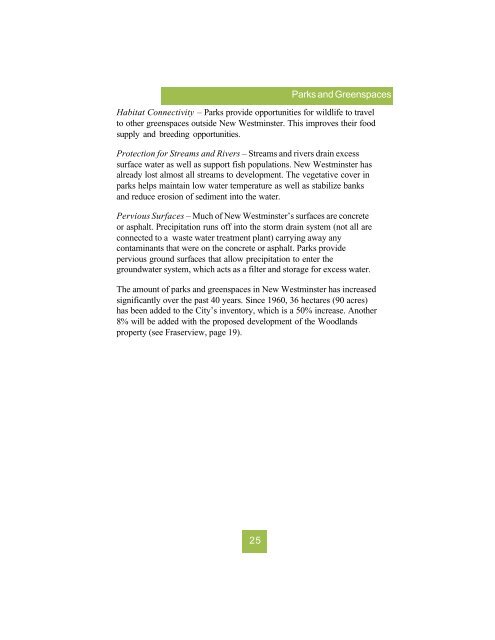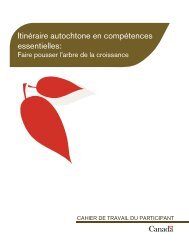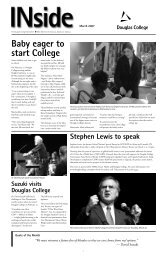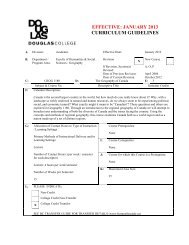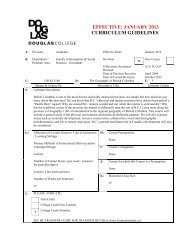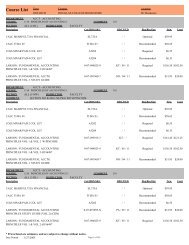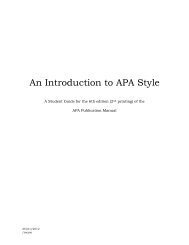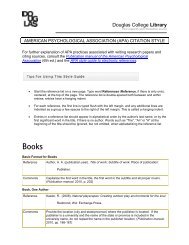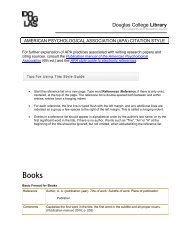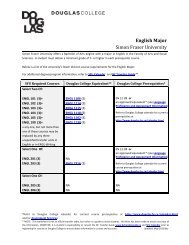New Westminster Environmental Almanac (2917 ... - Douglas College
New Westminster Environmental Almanac (2917 ... - Douglas College
New Westminster Environmental Almanac (2917 ... - Douglas College
Create successful ePaper yourself
Turn your PDF publications into a flip-book with our unique Google optimized e-Paper software.
25<br />
Parks and Greenspaces<br />
Habitat Connectivity – Parks provide opportunities for wildlife to travel<br />
to other greenspaces outside <strong>New</strong> <strong>Westminster</strong>. This improves their food<br />
supply and breeding opportunities.<br />
Protection for Streams and Rivers – Streams and rivers drain excess<br />
surface water as well as support fish populations. <strong>New</strong> <strong>Westminster</strong> has<br />
already lost almost all streams to development. The vegetative cover in<br />
parks helps maintain low water temperature as well as stabilize banks<br />
and reduce erosion of sediment into the water.<br />
Pervious Surfaces – Much of <strong>New</strong> <strong>Westminster</strong>’s surfaces are concrete<br />
or asphalt. Precipitation runs off into the storm drain system (not all are<br />
connected to a waste water treatment plant) carrying away any<br />
contaminants that were on the concrete or asphalt. Parks provide<br />
pervious ground surfaces that allow precipitation to enter the<br />
groundwater system, which acts as a filter and storage for excess water.<br />
The amount of parks and greenspaces in <strong>New</strong> <strong>Westminster</strong> has increased<br />
significantly over the past 40 years. Since 1960, 36 hectares (90 acres)<br />
has been added to the City’s inventory, which is a 50% increase. Another<br />
8% will be added with the proposed development of the Woodlands<br />
property (see Fraserview, page 19).


